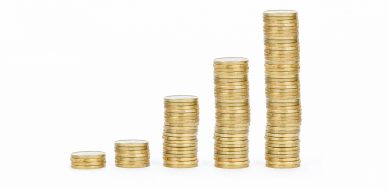The Gold Price Remains Outperformed by the Stock Market, But the Bubble Will Burst
The gold price remains under pressure. Gold has fallen below $280.00 per ounce. There should be nothing odd about this statement. After all, like most commodities, gold follows a typical pattern of supply and demand. But gold has an additional characteristic that makes the fact that it has fallen, instead of risen, peculiar.
Indeed, the current stock market has become so grotesque that it has suffocated gold’s chief characteristic. Despite gold’s solid track record as well as shelter in times of uncertainty, and despite the present global context being probably more uncertain than any other period since the end of World War II, gold appears to have lost its ability to attract investors.
Overall, however, gold will recover in the medium term if not in the next few weeks or months. President Nixon encouraged abandoning the gold standard. That was one of the key developments that led to the rise of the “creative” finance that has injected too much paper money into the system: too much liquidity. That has made the markets more fragile, but it has also turned the “value” system on its head.
We value the price of things, rather than their intrinsic value. The financial system is resting on quicksand. Abandoning gold has made the financial markets more vulnerable to bouts of crisis because it has made bubbles easier to inflate. Everything is fine as long as the conventions hold, otherwise the bubbles burst. And then, only gold remains.
But it’s important to stress that gold only appears to have retreated. The fact is that even gold cannot compete with the current hyperbolic stock market, which long ago abandoned logic. Investors take stock of the risks only when Kim Jong-un sends his atomic shibboleths from North Korea.
Then there’s the U.S. Federal Reserve. Its chair, Janet Yellen, is afraid that if she were to be completely honest, she’d trigger an avalanche on Wall Street. Thus, the Fed keeps the lamps burning in the markets. Investors forget about the mountain of risks and the mountain of debt at the government and household level.
The Fed has simply been overplaying its optimism. It has left the door open to a new rate hike this year, but it has not done so with determination. After talking hype about a rate hike, Yellen downplayed it last week. She suggested the data on inflation remains unclear. (Source: “Yellen says the Fed may have been wrong on employment and inflation, which would mean easier policy ahead,” CNBC, September 26, 2017.)
The rising Fed interest rates are supposedly the sign that the economic environment has improved. Thus, investors have decided to continue favoring riskier asset classes, shunning gold, a safe haven par excellence in times of crisis. Then, there’s the parallel phenomenon of Treasury bond yields. They too tend to rise with the nominal interest. Thus, they too acquire the veneer of a better, or rather safer, haven than gold.
But dark clouds approach and they will replace the market optimism. Investors will have little recourse but to renew interest in gold. There is the inevitable chance of a further escalation of the war of words between Donald Trump and King Jong-un. And that’s just one of the potential risk factors. The ISIS menace in Syria may have been severely disabled, but it remains. Moreover, that threat is evolving.
